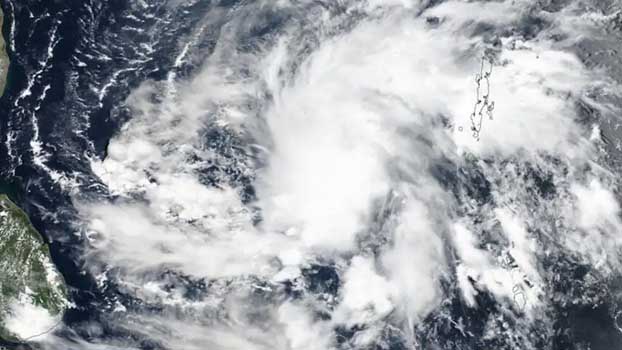Climate change
Bay of Bengal now a hotbed of cyclones

Climate experts attribute the impact of climate change to causing fierce, frequent and fast forming tropical cyclones in the Bay of Bengal as these storms get energy from warmer temperatures.
Due to the facts of global warming frequent strong cyclones are being shaped in the Bay of Bengal.
They highlighted that rising temperatures due to climate change are contributing to the formation and intensity of severe cyclones in the Bay of Bengal.
They also noted that, the number of cyclones in the Bay of Bengal has almost quadrupled in the last 60 years. Each cyclone is adding new dimensions to the causality; some are distinct for magnitude, some for speed and tidal wave.
According to a report by Bangladesh Meteorological Department (BMD), 30 cyclones were in the Bay of Bengal in between 1961-1980, while there were 48 cyclones in between 1981 to 2020.
Noteworthy, 3 cyclones have hit in the last one year since April 2019.
Talking to The Bangladesh Post climate program coordinator at an NGO Mustafizul Alam believes that the severity of cyclone in the Bay of Bengal is increasing due to climate change.
“To mitigate the adversities, the government’s move is laudable but media and climate activists have a big role to play here. Especially, after the USA president election, we are hoping countries like Bangladesh to get more funding for climate change,”he added.
He later mentioned that the effects of climate change are expected to increase the level of cyclones as sea temperatures, pressures, and air currents exceed normal levels. The average temperature in the Bay of Bengal has risen by 2.7 degrees Celsius.
The recent cyclone Amphan in the Bay of Bengal turned into a super cyclone in just 36 hours due to global warming.
According to a report by Inside Climate, a research information portal on climate events, reads, unprecedented sea surface temperatures of about 32 degrees Celsius in the Gulf sea in the first two weeks of May made the cyclone Ampan terribly strong. The wind speed in Amphan was 230 kilometers per hour.
The speed of the cyclone in the Bay of Bengal is the highest in the 21st century. The loss to Amphan was about one thousand and one hundred crore.
The National Aeronautics and Space Administration (NASA), an independent agency of the U.S. federal government, defines cyclones as the generic term for a non-frontal synoptic scale low-pressure system over tropical or sub-tropical waters with organized convection (i.e. thunderstorm activity) and definite cyclonic surface wind circulation.
BRAC University’s Emeritus Professor and Climatologist Dr Ainun Nishat referred that there were cyclones in two-three years in a row. Now it is happening in the Bay of Bengal every year. “Currently, we are dealing with multiple cyclones a year.”, he added.
“There are two important reasons behind the formation of cyclones - sea surface temperature and humidity. Due to the influence of climate, both these cyclones are prevailing in the Bay of Bengal. As a result, there are frequent big cyclones,” the expert said.
He explained that, the increase in disaster response capacity over the past few decades has made it possible to reduce the number of cyclone casualties and damage. However, it is a far cry to bring hostile nature into control, the impact of the cyclone is increasing unruly.




